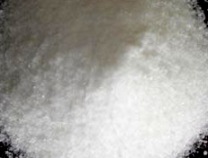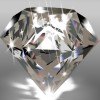Sodium Propionate Manufacturer Exporter
Crystal Clear Products is a manufacturer exporter company manufacturing several chemicals including Sodium Propionate and IP BP Ph Eur USP NF JP ACS AR Analytical Reagent FCC Food Grade, Pharmaceutical Chemicals at best prices. The group has offices and factories in India USA and UAE and toll manufacturers in China and sells to almost every country in the world.
The manufacturing facilities of our partner manufacturers have one or more of FDA-cGMP-GLP certification, ISO-9001 certification, Halal and/or Kosher certification, REACH pre-registration ISO-22000 HACCP. We also allow third party inspection of products offered. We can offer small quantities from laboratory and trial packs to large shipments of container loads of material.
Hazard statements:
H315: Causes skin irritation.
H320: Causes eye irritation.
H335: May cause respiratory irritation.

Signal Word: Warning
Transport Information
DOT USA, TDG Canada & ADR/RID Europe: Not dangerous goods.
IMO/IMDG: Not dangerous goods.
IATA/ICAO: Not dangerous goods.
You may please visit
Sodium Propionate Manufacturers BP IP USP NF FCC
MSDS of Sodium Propionate IP BP USP NF FCC Food Grade Manufacturer

Sodium Propionate Commercial Pure
Sodium Propionate
CH3CH2COONa
C3H5NaO2 Formula wt 96.06
INS: 281 CAS: [137-40-6]
DESCRIPTION
Sodium Propionate occurs as white or colorless, transparent crystals or as a granular, crystalline powder. It is hygroscopic in moist air. One gram is soluble in about 1 mL of water at 25°, in about 0.65 mL of boiling water, and in about 24 mL of alcohol. The pH of a 1:10 aqueous solution is between 8.0 and 10.5.
Function: Preservative; mold inhibitor.
REQUIREMENTS
Identification:
A. A 1:20 aqueous solution gives positive tests for Sodium.
B. Upon ignition, a sample yields an alkaline residue that effervesces with acids.
C. Warm a small sample with sulfuric acid. Propionic acid, recognized by its odor, evolves.
Assay: Not less than 99.0% and not more than 100.5% of C3H5NaO2 after drying.
Alkalinity (as Na2CO3): Passes test (about 0.15%).
Iron: Not more than 0.003%.
Lead: Not more than 2 mg/kg.
Water: Not more than 1%.
Sodium Propionate BP British Pharmacopoeia
C3H5NaO2
96.1 -- 137-40-6
Action and use
Antifungal
DEFINITION
Sodium propionate
Content
99.0 per cent to 101.0 per cent Sodium propionate (dried substance).
CHARACTERS
Appearance
Colourless crystals or, white or almost white powder, slightly hygroscopic.
Solubility
Freely soluble in water, sparingly soluble in alcohol, practically insoluble in methylene chloride.
IDENTIFICATION
First identification A, D.
Second identification B, C, D.
A. Infrared absorption spectrophotometry.
Comparison reference spectrum of sodium propionate.
B. Dissolve 0.1 g in a mixture of 2 ml of copper sulphate solution and 2 ml of methylene chloride. Shake vigorously and allow to stand. Both the upper and the lower layer show a blue colour.
C. To 5 ml of solution S add 2 ml of 0.1 M silver nitrate. A white precipitate is formed.
D. Solution S gives reaction of sodium.
TESTS
Solution S
Dissolve 10 g Sodium propionate in carbon dioxide-free water prepared from distilled water and dilute to 100 ml with the same solvent.
Appearance of solution
Solution S is clear and colourless.
pH
7.8 to 9.2
Dilute 1 ml of solution S to 5 ml with water.
Related substances
Liquid chromatography.
Test solution: Dissolve 0.250 g of the substance to be examined in water and dilute to 100 ml with the same solvent.
Reference solution (a) Dissolve 10 mg of the substance to be examined and 10 mg of sodium acetate in water and dilute to 100 ml with the same solvent.
Reference solution (b) Dilute 1.0 ml of the test solution to 100 ml with water.
Column:
ı size: l = 0.25 m, Ĝ = 4.6 mm;
ı stationary phase: octadecylsilyl silica gel for chromatography (5μm).
Mobile phase Dilute 1 ml of phosphoric acid R to 1000 ml with water.
Flow rate 1 ml/min.
Detection Spectrophotometer at 210 nm.
Injection 20 μl.
System suitability Reference solution (a):
ı resolution: minimum 5 between the peaks due to sodium acetate and sodium propionate.
Limits:
ı any impurity: not more than 0.1 times the area of the principal peak in the chromatogram obtained with reference solution (b) (0.1 per cent);
ı total: not more than half the area of the principal peak in the chromatogram obtained with reference solution (b) (0.5 per cent);
ı disregard limit: 0.05 times the area of the principal peak in the chromatogram obtained with reference solution (b) (0.05 per cent).
Readily oxidizable substances
In a ground-glass-stoppered conical flask introduce 10 g of the substance ( Sodium propionate.) to be examined.
Add 100 ml of water R and stir to dissolve. Add 25 ml of sodium hypobromite solution and 10 ml of a 200 g/l solution of sodium acetate, stopper the flask and allow to stand for 15 min. Add 10 ml of potassium iodide solution and 20 ml of hydrochloric acid while cooling.
Titrate with 0.2 M sodium thiosulphate, adding 2 ml of starch solution R towards the end of the titration. Carry out a blank titration. The difference between the volumes used in the 2 titrations is not greater than 2.2 ml.
Iron
Maximum 10 ppm.
10 ml of solution S complies with the limit test for iron.
Heavy metals
Maximum 10 ppm.
12 ml of solution S complies with limit test A. Prepare the standard using lead standard solution (1 ppm Pb).
Loss on drying
Maximum 0.5 per cent, determined on 1.000 g by heating in an oven at
105C for 3 h.
ASSAY
Dissolve 80.0 mg Sodium propionate in 30 ml of anhydrous acetic acid R. Titrate with 0.1 M perchloric acid, determining the end-point potentiometrically.
1 ml of 0.1 M perchloric acid is equivalent to 9.61 mg of C3H5NaO2.
Sodium Propionate FCC as per Food Chemical Codex
Sodium Propionate
CH3CH2COONa
C3H5NaO2 Formula wt 96.06
INS: 281 CAS: [137-40-6]
DESCRIPTION
Sodium Propionate occurs as white or colorless, transparent crystals or as a granular, crystalline powder. It is hygroscopic in moist air. One gram is soluble in about 1 mL of water at 25°, in about 0.65 mL of boiling water, and in about 24 mL of alcohol. The pH of a 1:10 aqueous solution is between 8.0 and 10.5.
Function: Preservative; mold inhibitor.
REQUIREMENTS
Identification:
A. A 1:20 aqueous solution gives positive tests for Sodium.
B. Upon ignition, a sample yields an alkaline residue that effervesces with acids.
C. Warm a small sample with sulfuric acid. Propionic acid, recognized by its odor, evolves.
Assay: Not less than 99.0% and not more than 100.5% of C3H5NaO2 after drying.
Alkalinity (as Na2CO3): Passes test (about 0.15%).
Iron: Not more than 0.003%.
Lead: Not more than 2 mg/kg.
Water: Not more than 1%.
Sodium Propionate NF USP
Sodium Propionate
C3H5NaO2·xH2O
Propanoic acid, sodium salt, hydrate.
Sodium propionate hydrate [6700-17-0]
Anhydrous 96.06 [137-40-6]
Sodium Propionate, dried at 105 for 2 hours, contains not less than 99.0 percent and not more than 100.5 percent of C3H5NaO2.
Identification
A: Infrared Absorption 197K , on un-dried specimen.
B: A solution (1 in 20) responds to the tests for Sodium.
Alkalinity Dissolve 2.0 g in 20 mL of water, and add phenolphthalein TS: if a pink color is produced, it is discharged by 0.60 mL of 0.10 N sulfuric acid.
Water: not more than 1.0%.
Heavy metals Dissolve 2 g in 1 mL of 1 N acetic acid and sufficient water to make 25 mL: the limit is 0.001%.
Organic volatile impurities: meets the requirements.
(Official until July 1, 2007)
Assay Dissolve about 200 mg of Sodium Propionate, previously dried at 105 for 2 hours and accurately weighed, in 50 mL of glacial acetic acid. Add 1 drop of crystal violet TS, and titrate with 0.1 N perchloric acid VS to a green endpoint. Perform a blank determination, and make any necessary correction. Each mL of 0.1 N perchloric acid is equivalent to 9.606 mg of C3H5NaO2.
Contact for Monograph, Uses, Matnfacturing Process, etc of Sodium Propionate and JP IP BP Ph Eur USP NF FCC Food AR ACS Reagent Grade Manufacturer Supplier Exporter
MANUFACTURER EXPORTER
MUMBAI 400009, INDIA. TEL: (OFFICE) 91-9322665100
info@manufacturerexporter.com
Copyright and Usual Disclaimer is Applicable
Last updated
11/19/2022
Manufacturer Suppliers Exporters at Wholesale Prices from India USA and around the Globe
Calcium Butyrate -- Calcium Propionate -- Calcium Saccharate -- Monosodium Phosphate -- Sodium Acetate Trihydrate Anhydrous -- Sodium Acetate IP BP USP ACS AR Analytical Reagent FCC Food Grade -- Sodium Bromate -- Sodium Bromide -- Sodium Butyrate -- Sodium Thiosulfate Thiosulphate Pentahydrate Anhydrous -- Sodium Thiosulphate Thiosulfate IP BP USP ACS AR Analytical Reagent FCC Food Grade -- Sodium Diacetate -- Sodium Erythorbate -- Sodium Propionate Manufacturer -- Sodium Hydroxymethanesulfonate Formaldehyde Bisulfite -- Tripotassium Phosphate -- Trisodium Phosphate -- Sodium Metabisulfite or Sodium Metabisulphite -- Sodium Nitrate & Sodium Nitrite --
Potassium Propionate -- Propionic Acid -- Borax or Sodium Borate -- Monosodium Citrate or Sodium Dihydrogen Citrate -- Disodium Hydrogen Citrate -- Sodium Citrate -- Sodium Formate -- Sodium Lactate -- Sodium lactobionate -- Sodium Malate -- Sodium Oleate -- Sodium Stearate -- Potassium Sodium Tartrate -- Sodium Tartrate -- Sodium Carbonate -- Hydrated Sodium Glycerophosphate --
Sodium Methyl Hydroxybenzoate or Sodium Methylparaben -- Sodium Ethyl Hydroxybenzoate or Sodium Ethylparaben -- Sodium Butyl hydroxybenzoate or Sodium Butylparaben -- Sodium Propyl Hydroxybenzoate or Sodium Propylparaben --






